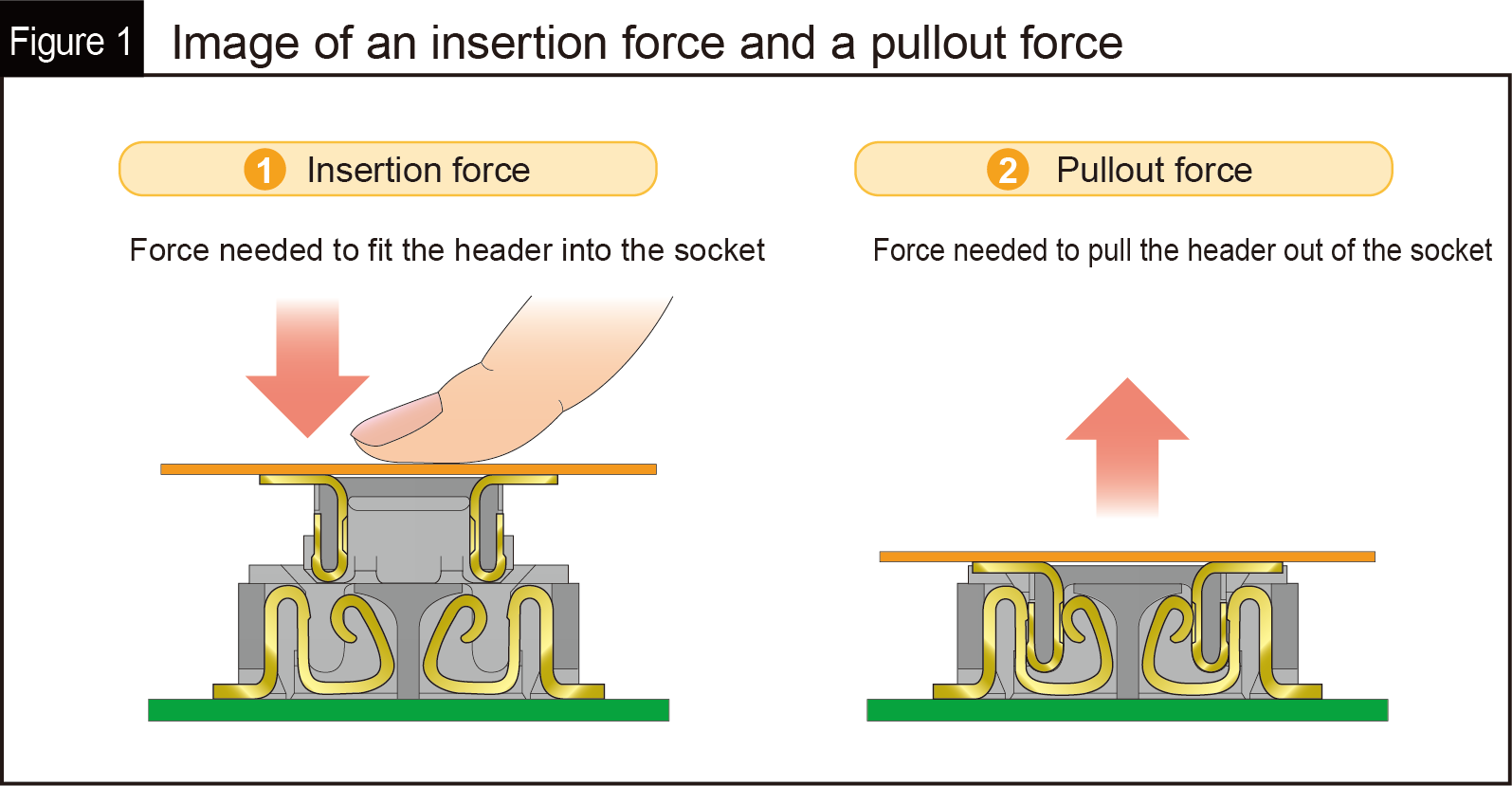We have inquiries from customers about the mechanical characteristics of connectors and would like to talk about that in this article. The mechanical characteristics are the basic characteristics of connectors and are important characteristics that affect the workability and connection reliability of connectors. Being familiar with these characteristics will help you in your device design work.
"Forces" involved in use of a connector reflect the mechanical characteristics of the connector.
See Table 1 below.
"Forces" involved in the use of the narrow-pitch connector and the FPC connector are classified into two kinds of forces that indicate the workability of the connector and the connection reliability of the connector, respectively.

In this article, we're going to focus on the narrow-pitch connector and describe the insertion force and pullout force that are involved in the use of a connector.
1. Insertion force
An insertion force is needed to fit the header of the narrow-pitch connector into the socket of the same.
This force affects the efficiency of fitting work at the narrow-pitch connector. Too large of an insertion force leads to a case where the force required for fitting work is so large that the work is difficult to perform.
Our catalog refers to this force as "total insertion force" and specifies an insertion force value equal to or smaller than "…N."
This means that pushing the header with a force equal to or smaller than "…N" secures it into the socket.
2. Pullout force
Pullout force is a maximum force that is required to pull the header out of the socket at the narrow-pitch connector. It represents the degree of connection reliability of the narrow-pitch connector.
Too small of a pullout force creates a high risk of the connector's coming off the connection it is applied to due to the moving in the process, or impact, vibrations, etc.
Our catalog refers to this force as "total pullout force" and specifies a pullout force value equal to or larger than "…N."
This means that the header does not come off from the socket unless a pullout force equal to or larger than "…N" is applied to the header.

Panasonic's catalog of narrow-pitch connectors also includes the item "terminal holding force." Don't confuse this terminal holding force with the pullout force. They are different.
The terminal holding force is a force that is required to pull a terminal out of a socket/header mold.
Well, that's what we've got for you today. In this article, we have explained to you two kinds of forces that reflect the mechanical characteristics of the narrow-pitch connector. In another articlewill focus on forces involved in use of the FPC connector: a lever locking force, an FPC holding force, and an FPC insertion force.





